What Can You Put In The Microwave – 7 Safe Materials
-
Greg Iacono
- Last updated:
Microwave ovens are a marvel of modern technology and are used in over 90% of American homes. Today’s modern microwaves are even safer and help make life easier and cooking faster for millions of people. However, microwaves have one drawback; they aren’t safe to use with all cooking materials. This begs the question, which cooking materials can you put in the microwave? We’ll answer that important kitchen question below, plus dole out more information about the materials that should never be put in a microwave.

The 7 Different Materials You Can Put in a Microwave
1. Microwave-safe Dinnerware
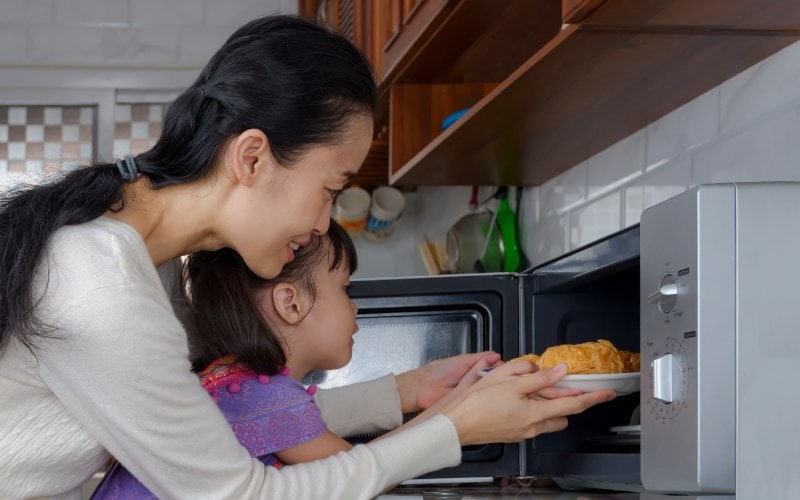
Since a few years after the microwave was invented, kitchen cookware manufacturers have been labeling their products as “safe” or “unsafe” for the microwave. Most kitchen dinnerware is safe because it’s made from either plastic or ceramic, which are microwave-safe. Always look for the “Microwave-safe” label before using it in yours.
2. Some Glassware
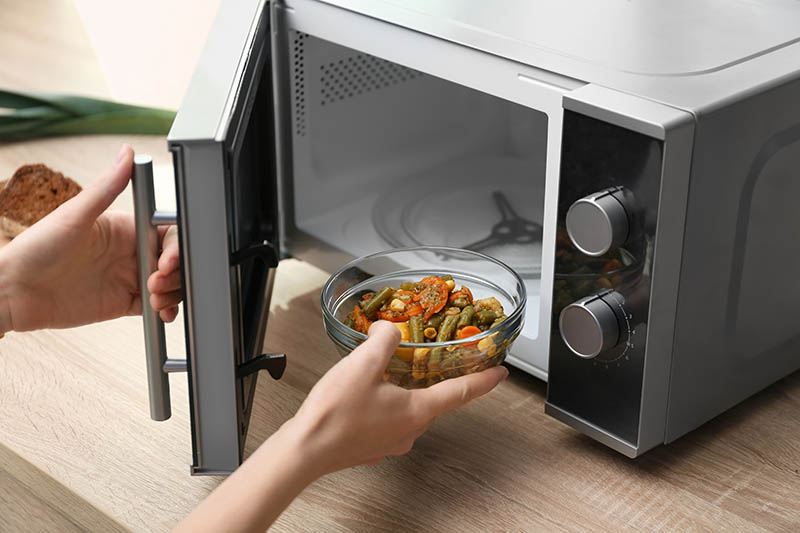
Glass is an inert material that reacts to nothing, including the specialized radiation from a microwave oven. However, because of the extreme heat produced, glass that hasn’t been hardened might shatter. That’s why Pyrex glass and other hardened glass brands are the only glass you should use when microwaving food. A regular kitchen water glass, for example, is an unsafe choice.
3. Modern Ceramic Dinner and Cooking Ware
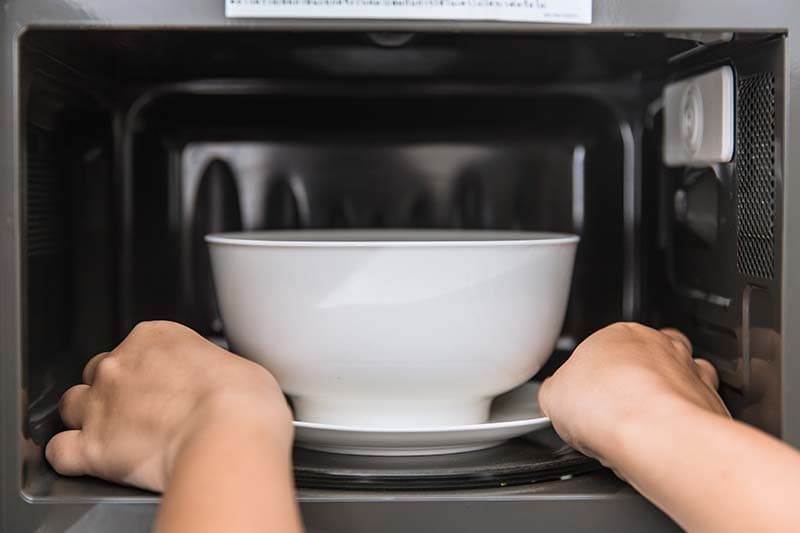
Many years ago, the ceramics being manufactured, while beautiful and practical, were less heat-resistant than they are today. Modern ceramic dinnerware, however, is made to withstand high heat and is thus perfect for the microwave. Modern ceramic cookware won’t break or melt and won’t leach into your food like some materials. It is recommended to check before cooking to make sure the ceramic item is microwave safe.
4. Some Plastics
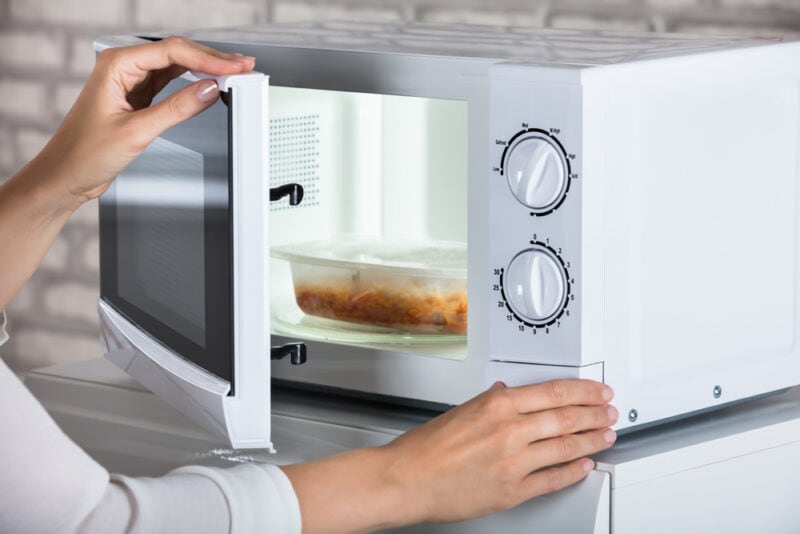
Most people store food safely in the fridge or freezer using plastic containers and bags. As for putting these food containers in the microwave, there are several caveats. First and foremost, look for the “microwave safe” label on the plastic container. Most bags won’t say anything, so be sure to cut them before microwaving, so they don’t explode while being cooked.
You can put them in another container if necessary to prevent spills. Some plastics will melt in the microwave, so be careful what you choose. Heavy-duty plastic wrap usually works, but ensure it’s tightly wrapped around the food container and not touching food when you use it.
5. Aluminum Foil
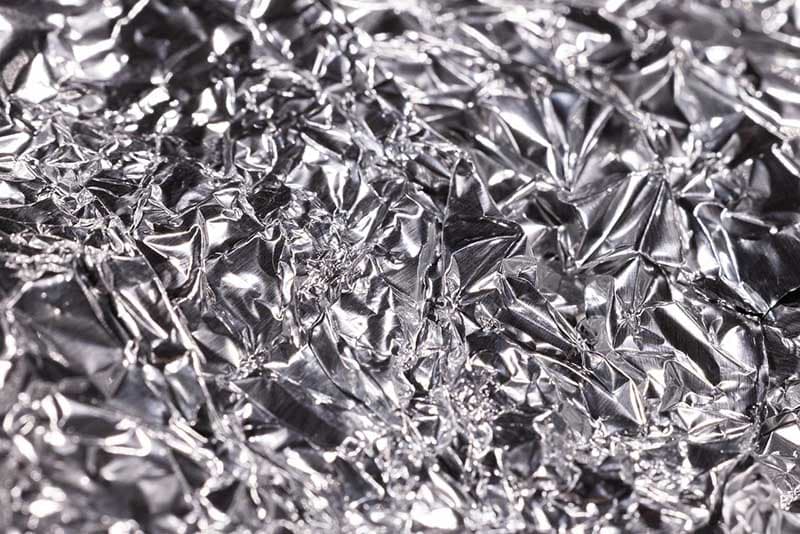
Yes, you read that right; in small amounts, aluminum foil is safe in the microwave. As you might guess, there are a few caveats. First, the aluminum foil must be in very small, smooth pieces. It should also be used sparingly and only to cover something you don’t want to overcook, like a thin steak. Lastly, the aluminum should be at least an inch from the walls of the microwave, if not further. Any closer and your microwave might “arc” when cooking, which can be dangerous.
6. Cooking Bags for the Oven

Many food container manufacturers today are making cooking bags meant to be used in the oven and reduce the mess. The same goes for the microwave oven, where cooking bags work like a charm since most are made of plastic. As with regular plastic bags, it’s best to cut a slit before turning on your microwave so that it doesn’t explode while cooking and create a big mess.
7. Wood
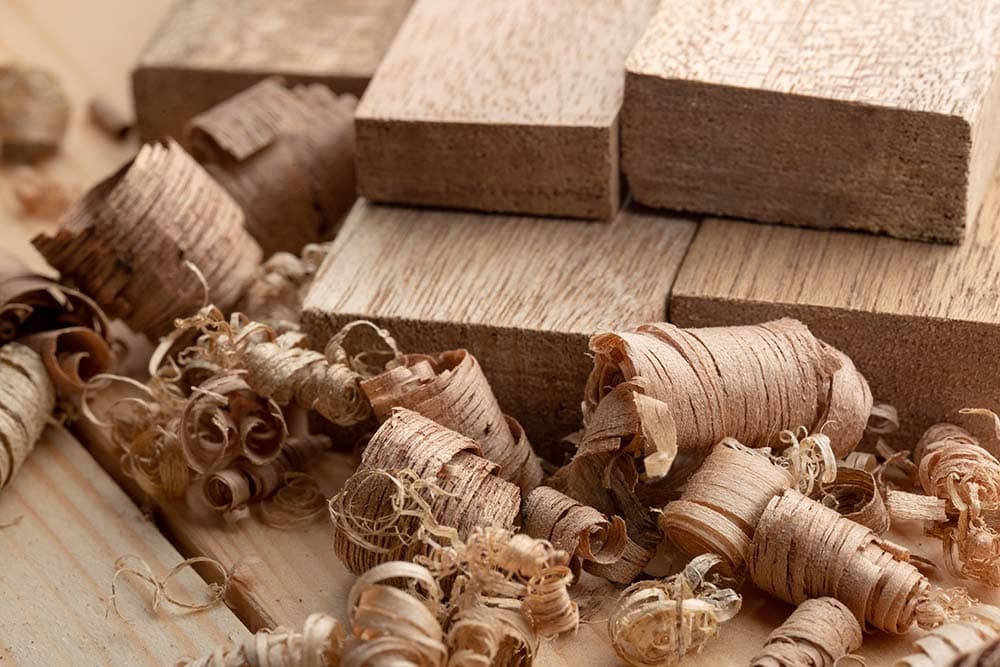
Most people wouldn’t think of putting wood in the microwave, but people who work with wood as an artistic medium often use the microwave. For example, if you’re a skilled wood carver, you might use a microwave to reduce the moisture content of the wood you plan to carve, which will prevent it from shrinking and cracking. Some artisans dry “green” wood in the microwave to prepare it before turning it on a lathe and creating something beautiful. It has to fit, of course, but wood can definitely be nuked.

What Materials Should Not Go in a Microwave?
It might seem like more things can’t go in a microwave than things that can. Several materials are unsafe for microwaves and can be dangerous if cooked in them. Others must be microwaved with caution. Below are some materials you should never put in a microwave or cook in it with caution.
Stainless Steel and Any type of Metal
Most people learn that metal objects can’t go in the microwave at a young age. That includes stainless steel gadgets, silverware, and food containers with metal parts. Not only are these materials hazardous, but your food won’t be cooked since microwave rays can’t pass through them.
Large Amounts of Aluminum
Yes, we said aluminum was good a few minutes ago. However, that’s when it’s used in tiny amounts. If you try, for example, to cook a large dish covered in aluminum foil, that could lead to very dangerous arcing and even a fire.
Styrofoam
Any styrofoam, including cups, plates, and other dinnerware, will quickly melt in the microwave and should never be used to cook or reheat anything. Not only will it melt, but the styrofoam can also transfer dangerous doses of plastic chemicals to your food.
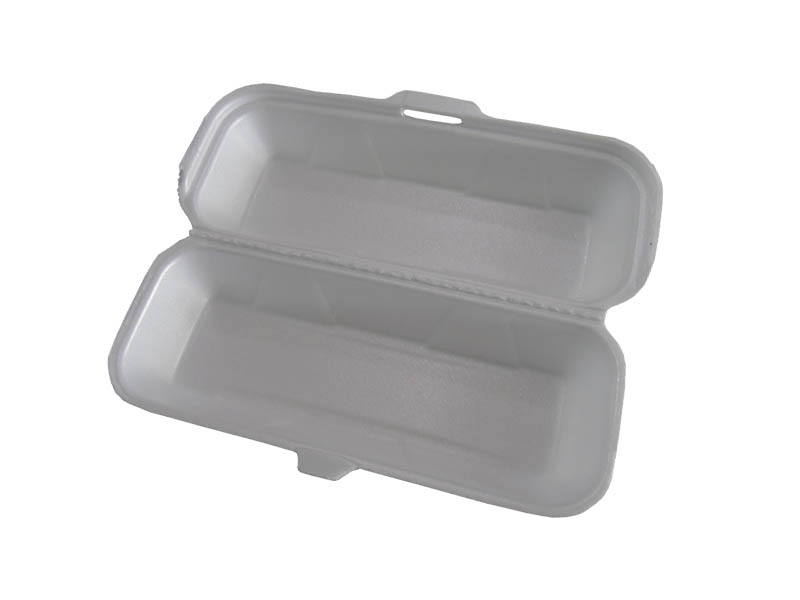
Some Takeout Containers
Most takeout containers these days are all cardboard and have no metal, but some still do. Some have metal and an inner plastic lining, which should never go in your microwave. A quick glance should tell you if it’s safe, and some containers include the “microwave safe” icon.
Water
This might shock many people, but microwaving a mug of water is not recommended. The reason why is that, when microwaved, water can get superheated but not boil. This has fooled many people into thinking their water wasn’t hot and scalded them severely. Most microwave manufacturers don’t recommend microwaving water for this reason.

Some Foods
Although not technically “materials,” some foods don’t do well when cooked in the microwave. This includes broccoli, for example, which loses every bit of its nutrients when nuked. Also, pasta sauce is notorious for causing a disastrous mess in many microwaves. The reason is that the steam generated by microwaving gets trapped in the thick sauce and then explodes like an underwater mine, shooting pasta sauce in every direction.
It’s not recommended to microwave very spicy peppers because their capsaicin vaporizes into a gas that can cause severe damage and pain to your eyes, nose, and throat. Whole eggs in the shell should also stay out of your microwave because they can explode and cause severe burns.
Final Thoughts
The microwave in your kitchen is an amazing machine, but, like all kitchen appliances, it must be treated with care and respect. The list of materials that can be put in a microwave, if you take food into consideration, is bigger than the list of materials you can’t, thank goodness. We hope the information provided today has given you the lowdown on which materials you can put in your microwave the next time you cook a great meal.
See also: Can You Microwave Water Bottles? (Microwave Safety Tips)
Featured Image Credit: Pixel-Shot, Shutterstock
Contents
